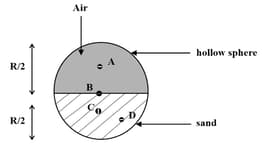Center of Mass
Center of Mass: Overview
This topic covers concepts, such as Centre of Mass, Centre of Mass of Two Particles, Centre of Mass of More than Two Particles, Centre of Mass of Symmetrical Bodies, and Centre of Mass of Continuous Bodies.
Important Questions on Center of Mass
If the resultant of all the external forces acting on a body be zero, the centre of mass of the system
Consider a two-particle system with particles having masses and . If the first particle is pushed towards the centre of mass through a distance , by what distance should the second particle be moved, so as to keep the centre of mass at the same position?
Which of the following points is the likely position of the centre of mass of the system shown in figure?
Two particles each of mass are placed at a distance of and respectively from the origin along -axis. The centre of the mass of the system of the particles is
Two particles each of mass are placed at a distance of and respectively from the origin along -axis. The centre of the mass of the system of the particles is
Two particles and , initially at rest, move towards each other under a mutual force of attraction. At the instant when the speed of is and the speed of is , the speed of the center of mass of the system is:
A projectile is launched from the origin with speed at an angle from the horizon. At the highest point in the trajectory, the projectile breaks into two pieces, and of masses and respectively. Immediately after the breakup, piece is at rest relative to the ground. Neglect air resistance. Which of the following sentences most accurately describes what happens next?
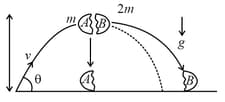
In a molecule, the separation between the nuclei of the two atoms is about . Given that a chlorine atom is about times as massive as a hydrogen atom and nearly all the mass of an atom is concentrated in its nucleus, the position of centre of mass of the molecule is
Center of mass of three particles of masses and lies at the point and center of mass of another system of particles and lies at the point . The point at which a particle of mass be placed, so that the center of mass of first system coincides with centre of mass of whole system is:
The center of mass of a system of two particles of masses and is at a distance from and at a distance from mass , such that:
The coordinates of the center of mass of a uniform shaped lamina of mass is:
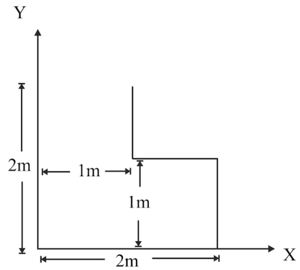
Three particles of masses and are located at the vertices of an equilateral triangle (see figure below). The coordinates of centre of mass of this system is located at:
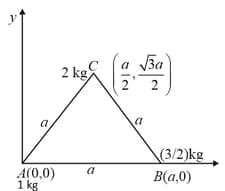
A system of two particles is having masses and . If the particle of mass is pushed towards the center of mass of the particles through a distance, by what distance the particle if mass should be moved so as to keep the center of mass of particles at the original position?
As shown in figure from a uniform rectangular sheet a triangular sheet is removed from one edge. The shift of center of mass is
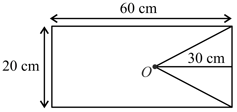
A rope of length 30 cm is on a horizontal table with maximum length hanging from edge A of the table. The coefficient of friction between the rope and table is 0.5. The distance of centre of mass of the rope from A is
Two blocks of masses and are placed along a vertical line. If block is raised through a height of , then the distance through which other mass should be moved to raise the center of mass of the system by is
Two spherical bodies of masses and and radii and , respectively, are released in free space, with initial separation between their centres equal to . If they attract each other due to gravitational force only, then the distance covered by the smaller body, just before collision is
Three identical spheres, each of mass are kept as shown in figure below, touching each other, with their centers on a straight line. If their centres are marked , , respectively, the distance of centre of mass of the system from is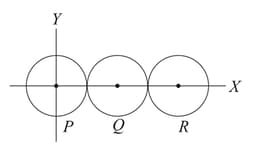
Consider a two particle system with particles having masses and . If the first particle is pushed towards the centre of mass through a distance , by what distance should the second particle be moved, so as to keep the centre of mass at the same position?
A body of mass while falling vertically downwards under gravity breaks into two parts; a body of mass and body of mass . The center of mass of bodies and taken together shifts compared to that of body towards

